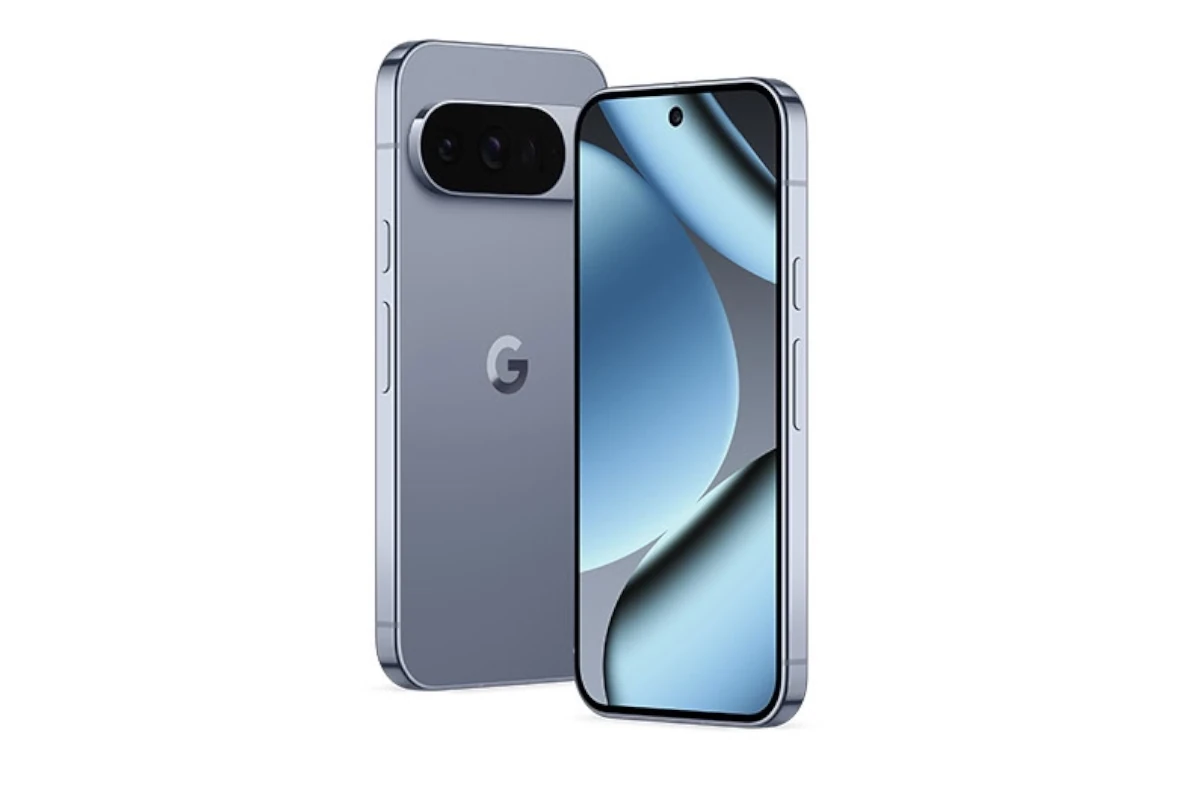Google’s annual Made by Google 2025 event (August 20) wasn’t just another phone launch—it was a statement. With the debut of the Pixel 10 lineup, Google positioned its devices at the heart of the AI-first smartphone era, directly challenging Apple’s iPhone 16 series and Samsung’s Galaxy S25 family.
Here’s everything you need to know about the new Pixel phones, pricing, availability, and ecosystem upgrades.
A Bigger Lineup Than Ever Before
Google revealed four Pixel 10 models this year:
- Pixel 10 – The entry point into the series, starting at $799 (₹79,999).
- Pixel 10 Pro – A performance-focused upgrade with AI-first camera features.
- Pixel 10 Pro XL – A larger, more premium take on the Pro.
- Pixel 10 Pro Fold – Google’s second-generation foldable, redesigned for durability with an IP68 water- and dust-resistance rating.
The Pixel 10, 10 Pro, and Pro XL hit shelves on August 28, while the Pro Fold lands on October 9. Pre-orders are already live worldwide.
The Heart of Pixel 10: AI Meets Hardware
Tensor G5: Google’s Most Advanced Chip Yet
Built on TSMC’s 3nm process, the new Tensor G5 chip delivers up to 60% faster AI (TPU) performance and a 34% CPU speed boost, with significant efficiency gains. That makes the Pixel 10 not just faster, but also better at sustaining performance during heavy use.
The real story, though, is how Tensor powers Gemini Nano, Google’s on-device AI assistant. Unlike cloud-only AI tools, Gemini runs directly on the Pixel, making features faster, more private, and available offline.
AI Features That Change How You Use Your Phone
Google isn’t just adding gimmicks—its AI upgrades aim to become part of daily life:
- Magic Cue: Context-aware assistance. Imagine booking a flight and instantly having all your travel details surface during a call—no app switching required.
- Camera Coach: Real-time guidance on framing, lighting, and composition. Perfect for creators or casual photographers.
- 100× AI Zoom: On Pro models, AI-enhanced zoom rivals dedicated cameras, reducing blur and artifacts.
- AI Transcription & Translation: Pixel 10 can answer calls with “Take a Message,” transcribe voicemails, and even translate conversations—using your own cloned voice.
- AI Journaling & Dashboards: Automatically generates daily summaries of your activities, helping track habits and productivity.
- Text-based Photo Editing: Type a request (“make the sky more vibrant”) and Pixel edits the shot for you.
These AI features are central to Google’s strategy, making Pixel less about raw specs and more about being a smarter companion than competitors.
Smarter Design, Faster Charging
- Qi2 “PixelSnap” Charging: All Pixel 10 models now support magnetic wireless charging, similar to Apple’s MagSafe. The Pro XL supports up to 25W Qi2.2 charging, putting it among the fastest wireless systems available.
- Durability & Sustainability: The Fold gains IP68 protection, a rare feature for foldables, while all models incorporate recycled materials in their frames.
- Refined Look: Brighter displays, slimmer bezels, and Google’s new Material 3 Expressive UI give Pixel a fresh aesthetic edge.
- Longevity: Google promises 7 years of OS and security updates, matching (and in some ways exceeding) Apple’s iPhone support.
Expanding the Pixel Ecosystem
Google also expanded beyond smartphones:
- Pixel Watch 4: A redesigned smartwatch with better battery life, easier repairability, and AI-powered health insights. Launches in early October.
- Pixel Buds 2a: Google’s lightest earbuds yet, offering active noise cancellation at just $129. The higher-end Buds Pro 2 also debuted in a new Moonstone finish.
This push shows Google’s ambition to create a fully integrated hardware + AI ecosystem—much like Apple’s iPhone-Apple Watch-AirPods trio.
Why It Matters
The Pixel 10 series isn’t just about better cameras or faster chips—it’s about embedding AI into everyday smartphone use. With Apple leaning on Apple Intelligence and Samsung ramping up Galaxy AI, Google’s bet on Tensor + Gemini integration is its way of keeping Pixel competitive in the premium smartphone race.
For buyers, the Pixel 10 is one of the first phones designed from the ground up around AI, not just as an add-on. If you’re an Android fan—or someone curious about how AI will transform smartphones—this could be the most future-ready device of 2025.
Pixel 10 Highlights at a Glance
| Category | Details |
|---|---|
| Launch Date | Announced August 20, 2025 at Made by Google event |
| Release | Pixel 10 series: August 28; Pixel 10 Pro Fold: October 9 |
| Key Features | Tensor G5 chip, Gemini AI integration, Magic Cue, Camera Coach, 100× Zoom |
| Design | Qi2 wireless charging, IP68 on Fold, brighter displays, sustainable build |
| Longevity | 7 years of updates (OS + security) |
| Ecosystem | Pixel Watch 4, Pixel Buds 2a, Pixel Buds Pro 2 |
Pixel 7 vs 7a
Choosing between the Google Pixel 7 and Pixel 7a can be tricky since they share many features. Both phones run on the same Tensor G2 processor, giving you similar performance for everyday tasks. However, there are some key differences worth noting before making your decision.
The Pixel 7a offers better camera specs with a 64-megapixel main camera compared to the Pixel 7’s 50-megapixel sensor, potentially giving the less expensive model an edge in photography. The 7a also features a higher resolution front camera, making it appealing for selfie enthusiasts. Meanwhile, the Pixel 7 boasts a slightly larger 6.3-inch screen compared to the 7a’s 6.1-inch display, though the physical size difference is minimal due to the 7a’s larger bezels.
Price is another important factor, with the Pixel 7a available at $500 while the Pixel 7 costs $600. The premium model does justify some of its higher price with better build materials, faster charging capabilities, and a more refined design. The ultrawide camera functionality also differs between models, with the Pixel 7 offering more versatility in its camera system despite the lower megapixel count.
Key Takeaways
- The Pixel 7a features a higher-megapixel camera while costing $100 less than the standard Pixel 7.
- Both phones use the same Tensor G2 processor, ensuring similar performance for most users.
- The Pixel 7 offers better build quality, faster charging, and a slightly larger display than the 7a.
Comparing Pixel 7 and Pixel 7a Specifications
Google’s Pixel 7 and 7a share many similarities but differ in key areas that might influence your buying decision. These differences span across design elements, internal hardware, camera capabilities, and battery features.
Design and Display
The Pixel 7 and 7a maintain Google’s distinctive design language with the camera bar across the back, but they differ in size and materials. The Pixel 7 features a larger 6.3-inch OLED display compared to the 7a’s more compact 6.1-inch screen. Both phones offer the same resolution at 2400 x 1080 pixels.
The Pixel 7 uses more premium materials with Gorilla Glass Victus for added durability. In contrast, the 7a uses slightly less premium materials but maintains a similar aesthetic appeal.
Display refresh rates differ between the models. The Pixel 7 offers a smoother 90Hz display as standard, making scrolling and animations appear more fluid. The 7a also supports 90Hz, which is an upgrade from previous A-series models.
Weight and dimensions vary slightly, with the Pixel 7 being marginally heavier but offering a more premium in-hand feel.
Performance and Storage
Both the Pixel 7 and 7a are powered by Google’s Tensor G2 processor, providing similar performance capabilities for everyday tasks. This chip enables advanced AI features and ensures smooth operation across both devices.
Memory configurations are identical with 8GB RAM in both models, sufficient for multitasking and app switching. The standard storage option for both is 128GB, though the Pixel 7 is also available in a 256GB variant.
Software experience remains consistent across both phones, with the same Android version and Google’s helpful AI features. Both receive the same software update guarantee of five years.
Benchmarks show nearly identical performance in real-world usage. Any differences in speed are minimal and unlikely to be noticed in daily use.
The thermal management in the Pixel 7 is slightly better during intensive tasks like gaming, but the difference isn’t significant for most users.
Camera Features
Despite sharing the same camera bar design, the camera systems differ between models. The Pixel 7 sports a 50MP main camera with a larger sensor, while the 7a features a 64MP main camera with a smaller sensor size.
The ultrawide lenses also differ: 12MP on the Pixel 7 versus 13MP on the 7a. Despite the megapixel difference, image quality from both phones is exceptional thanks to Google’s software processing.
Both phones include Google’s computational photography features like Night Sight, Portrait Mode, and Photo Unblur. These features work equally well on both devices.
The front-facing cameras differ with the Pixel 7 having a 10.8MP selfie camera compared to the 7a’s 13MP sensor. The 7a technically has a higher resolution for selfies, though processing affects final image quality more than raw specs.
Digital zoom capabilities and dynamic range performance are slightly better on the Pixel 7 due to its larger main sensor.
Battery Life and Charging Capabilities
Battery capacity is similar between both models, providing comparable daily battery life. Most users can expect a full day of use from either phone under normal conditions.
Charging speeds differ noticeably between the devices. The Pixel 7 supports faster 20W wired charging compared to the 7a’s 18W capability. This results in slightly quicker charging times for the Pixel 7.
Wireless charging shows a more significant difference. The Pixel 7 supports 20W wireless charging, while the 7a is limited to slower 7.5W wireless charging speeds.
An additional feature exclusive to the Pixel 7 is reverse wireless charging, which allows it to charge accessories like wireless earbuds. The 7a lacks this capability entirely.
Battery optimization features are identical across both phones, utilizing Google’s adaptive battery technology to maximize battery life based on usage patterns.
Software and User Experience
Both the Pixel 7 and Pixel 7a run on Google’s clean version of Android with the powerful Tensor G2 chip. This ensures nearly identical daily performance across both devices, with subtle differences in how each handles specific features.
Android 13 Integration
The Pixel 7 and 7a both feature Android 13 with Google’s signature clean interface and minimal bloatware. Both phones receive Google’s software updates promptly, though according to search results, the Pixel 7a may have a longer software support timeline. This gives the 7a a slight edge for those planning to keep their device for several years.
Android 13 brings improved material design elements, enhanced privacy controls, and better battery optimization to both devices. The notification system has been refined, with more intuitive grouping and management options.
Google’s AI features are deeply integrated into the system, including smarter text suggestions and voice typing capabilities that work remarkably well on both phones.
Unique Features and Enhancements
Both phones offer identical AI-powered features like Magic Eraser, which removes unwanted objects from photos with impressive accuracy. The Real Tone feature ensures accurate skin tones across different ethnicities and lighting conditions.
The fingerprint sensor performs similarly on both devices, though some users report slightly faster response times on the Pixel 7. Both phones also support face unlock, though it’s primarily for convenience rather than security.
Battery management is improved through adaptive battery features that learn from usage patterns. The Pixel 7a supports 90Hz refresh rate like the Pixel 7, though it’s not enabled by default and needs to be manually activated in settings.
Ecosystem and 5G Connectivity
Both the Pixel 7 and 7a integrate seamlessly with Google’s ecosystem of services including Google Photos, Drive, and Assistant. The Google Assistant experience is virtually identical on both devices, with quick responses and accurate voice recognition.
5G connectivity is standard on both models, supporting sub-6GHz bands in all markets. The Pixel 7 offers mmWave 5G in more configurations than the 7a, which may matter if you live in an area with mmWave coverage.
Google Cast functionality works flawlessly on both devices for streaming content to compatible TVs and speakers. The built-in security features like the Titan M2 chip provide robust protection against digital threats.
Call screening and other Pixel-exclusive communication features work equally well on both phones, filtering out spam calls and providing real-time transcriptions.
Frequently Asked Questions
The Pixel 7 and 7a models differ in several important ways despite their similar names. These differences extend across build quality, camera capabilities, pricing, and overall performance characteristics.
What are the main differences in specifications between the Pixel 7 and the 7a?
The Pixel 7 features a glass back with Gorilla Glass Victus protection, while the Pixel 7a uses Gorilla Glass 3 only on the front panel. This gives the Pixel 7 a more premium feel and better durability.
The Pixel 7 has an IP68 water and dust resistance rating, offering better protection against the elements than the Pixel 7a. Screen bezels on the Pixel 7 are also smaller, providing a more modern aesthetic.
The Pixel 7 has a slightly larger display than the 7a, though both phones use the same Tensor G2 processor for core performance.
How does the camera quality compare between the Pixel 7 and the Pixel 7a?
The camera comparison between these models presents some interesting differences. The Pixel 7a features a 64-megapixel main camera sensor, while the Pixel 7 uses a 50-megapixel sensor.
Despite the higher megapixel count on the 7a, the Pixel 7 generally produces better photos. This is because the Pixel 7 has a physically larger image sensor that captures more light.
The Pixel 7 also includes laser autofocus, which the 7a lacks. This helps with focusing speed and accuracy, especially in challenging lighting conditions.
What is the price difference between the Google Pixel 7 and the 7a models?
The Pixel 7a was designed as a more budget-friendly option in Google’s smartphone lineup. It typically sells for about $100-150 less than the standard Pixel 7 at launch.
This price difference reflects the compromises in build materials, camera hardware, and other specifications. The value proposition varies based on current discounts and promotions.
With frequent sales on both models, the actual price gap can sometimes narrow, making the decision more complicated for buyers on a budget.
Are there any notable differences in performance between the Pixel 7 and 7a?
Both phones use Google’s Tensor G2 processor, so core processing performance is very similar. Day-to-day tasks and app usage feel nearly identical on both devices.
The Pixel 7 may perform slightly better in sustained heavy use due to its larger size allowing for better heat dissipation. This can help prevent throttling during gaming or other intensive tasks.
Battery life is comparable between the two models, though actual results vary based on individual usage patterns and settings.
Has the Pixel 7 been discontinued in favor of the Pixel 7a?
The Pixel 7 has not been officially discontinued as of March 2025. Google typically keeps previous generation phones available for purchase alongside newer models.
Inventory levels may vary at different retailers as newer Pixel models have been released. Some stores might have limited stock of the Pixel 7 compared to when it first launched.
Google’s support policy ensures that both the Pixel 7 and 7a will continue to receive security updates and new features for several years.
What features distinguish the Pixel 7a from the Pixel 7 and Pixel 7 Pro?
The Pixel 7a offers most of Google’s core software features at a lower price point than its siblings. This includes the same AI capabilities and photo editing tools.
The 7a lacks the wireless charging speed of the Pixel 7, and it doesn’t have the same premium materials. Its plastic frame and simpler construction help reduce costs.
Compared to the high-end Pixel 7 Pro, the 7a omits the telephoto camera lens and uses a lower-resolution display with a standard refresh rate instead of the Pro’s adaptive high refresh rate.







